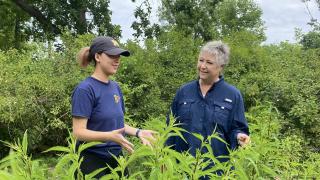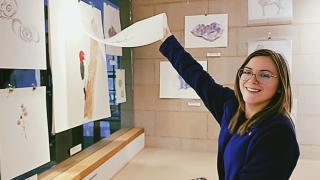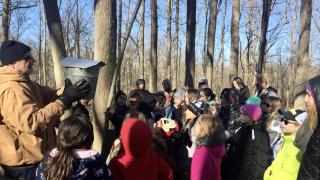

This year, Rouge River Bird Observatory celebrates 20 years of research.
For Craves, it’s the project that kept on going. RRBO started as an offshoot of her undergraduate research at UM-Dearborn. After her internship at Manomet Bird Observatory in Massachusetts, Craves asked her adviser, Orin Gelderloos, if she could begin a modest project to document birds on campus.
“We discovered what a rich abundance and diversity of birds were using our area, and also noted that there was no long-term urban bird research center in the country,” she said.
Today, RRBO is the longest-running full-time urban bird research station in North America.
“In our increasingly urbanizing world, habitat fragments in metropolitan areas are becoming critical to the survival of birds,” Craves said. “Understanding these ecosystems and how birds use them is essential for science-based conservation.”
In the past 20 years, Craves and the RRBO have banded more than 33,000 birds of 122 species on the University’s campus. The organization has also conducted bird surveys that have tracked resident and migrant bird populations, documented breeding birds and compiled biological inventories throughout Wayne County.
The work includes early mornings tracking birds along a standardized route and long days of analyzing data.
“Nobody finds this work very glamorous,” she said. “But that means we are providing a valuable resource to state agencies and others seeking information.”
One instance in which RRBO proved invaluable was during the West Nile Virus outbreak. Because Craves and other volunteers had been counting crows and collecting data on the birds, they were able to provide vital baseline data that state agencies needed.
RRBO also has proven valuable to UM-Dearborn students. Because RRBO is funded entirely outside of the University and relies heavily on individual donations, Craves depends on the work of students.
The organization has trained more than 100 students in hands-on fieldwork. Many have continued on in careers in science and conservation, working at places like National Audubon Society, Nature Conservancy and national bird observatories.
As it enters its third decade, Craves hopes that the work of RRBO will allow others to gain an appreciation for area wildlife.
“Birds are biological indicators. Urban birds are extremely resilient; we have a lot to learn from these birds,” she said.
To learn more about Rouge River Bird Observatory or to learn how you can support its mission, visit the organization’s website or subscribe to their newsletter.





